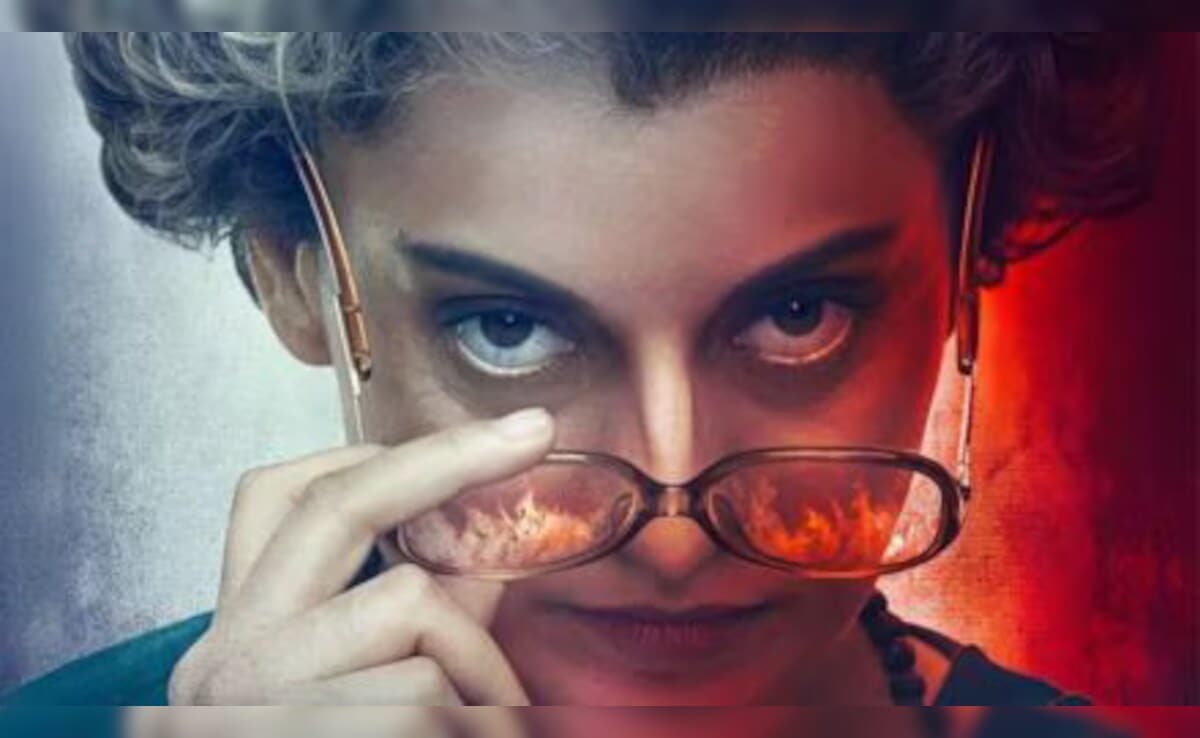New Delhi:
Two things stand out in the long-delayed, unmitigatedly messy emergencyOne, the ‘story’ of the biopic is credited to director and lead actress Kangana Ranaut. If that isn’t an upfront admission that there are dashes of fiction in this fanciful, lopsided view of the eventful life and times of Indira Gandhi, what is?
And two, the film launches itself into a bewildering flight of the imagination: the spectacle of Jayaprakash Narayan, Atal Bihari Vajpayee and even Field Marshal Sam Manekshaw (Milind Soman) breaking into rousing song (mercifully, not dance).
The number conveys the nation’s preparedness for the 1971 war to liberate East Pakistan and birth Bangladesh. Even the most willing suspension of disbelief cannot prepare you for a call-to-action musical interlude such as this. emergency is peppered with many surprises of this nature.
Now, back to serious matters. One of the darkest phases of Indian democracy and the repercussions of the imposition of internal emergency on the nation and the Prime Minister herself is dramatized with strokes so broad that all of Indraprastha and its vast annals would be hard-pressed to contain them.
These strokes constitute the core of the film but Ritesh Shah’s screenplay is steadily cast in the mold of a cradle-to-the-grave tale. The film wades through the early years of Indira Gandhi’s life pretty much in the manner that it treats the rest of it – hastily, superficially and risibly.
There is more hysteria than history in emergencyBut the absence of nuance is the least of the film’s problems. It has two broad segments. One-half of the film is devoted to exposing Mrs G’s lust for power and her weakness for her son Sanjay Gandhi (Vishak Nair), the other to tracking her comeback after being voted out and jailed in 1977.
In a disclaimer, perhaps the most long-winded ever in the history of cinema, the makers cite a couple of books about Indira Gandhi and the Emergency as its source material and claim that the facts in the film have been verified by three experts. That doesn’t stop Ranaut from taking cavalier liberties with extensively documented political events for that harmless diversion that we call “dramatic purposes”.
The 147-minute Emergency takes no time to spell out the direction it is headed in. The script would have us believe that Indira had a very unhappy childhood because of the way her bua Vijaya Lakshmi Pandit mistreated her ailing mother Kamala Nehru and that she, as a girl with a mind of her own, did not see eye to eye with her father Jawaharlal Nehru on many matters.
In an early scene, with no one else to turn to for solace, a young Indira walks into her grandfather Motilal Nehru’s room. He tells her that satta (political power) means taaqat (strength). What transpires in large swathes of the film thereafter shows the older Indira wielding a lot of power but exuding little that could be construed as strength.
Streaks of gray on a wavy hairdo not an Indira Gandhi make. The way Ranaut embodies her in a stilted, slanted story in which the protagonist is both the heroine and the villainess, the lady comes across as a giggly, whiny pipsqueak barely able to make her way through the rough and tumble of politics.
She stumbles and grumbles while the rumbles demanding her ouster from power gather momentum. One of the strongest women in Indian, and arguably world, history is depicted as a lady made of straw. The iron that defined her goes almost completely missing. She is reduced to mumbling “Indira is India, India is Indira”, a line, like so much else in the film, wrongly attributed.
Emergency is a clash of crass caricatures, each as crude as the other. Anupam Kher is Indira Gandhi’s bete noire Jayaprakash Narayan, Shreyas Talpade is Atal Bihari Vajpayee and Satish Kaushik (in his final screen role) is Babu Jagjivan Ram, portrayed as a perennially carping critic of the Prime Minister.
These influential figures from contemporary Indian politics are made to say and do things that seem to have been conveniently and casually bunged into the plot to establish that the ruler of the day was a woman who had lost her way. Well, Emergency is a film that doesn’t know where to draw the line.
To return to the politician who the film first runs down and then props up, the lady is dismissed as gudiya (the goongi part of the sobriquet, attributed to Ram Manohar Lohia, is skipped) by Jayaprakash Narayan. Words are put into the mouths of JP and Atal Bihari Vajpayee to establish how the Opposition back then upheld the interests of India far more than the Prime Minister did.
Believe what you must – it does not matter much which side of the divide you belong to as you watch the film – but couldn’t Emergency have been less laughably inept? Apart from the rudimentary acting – you can very sense that the actors are ill at ease playing persons still fresh in living public memory – and the generally casual approach to period detailing, the film, like the protagonist, lurches from one crisis to another crisis.
A catatonic state clings to the film like an armour. Its Belchhi moment never materialises although the film makes the point to project that incident – Indira, against administrative orders, rides an elephant to reach the village in Bihar that saw a massacre of lower caste peasants by landlords – for what it was: the beginning of the reversal of her downfall.
The emergence of Sanjay Gandhi is obviously given due play in Emergency. Besides the Turkman Gate demolition and an infamous population control campaign, the blame for the declaration of Emergency (after Indira Gandhi was disqualified from electoral politics for six years by the Allahabad High Court) is laid at his door.
After the deed has been done, Indira Gandhi is wracked by guilt and, like a present-day Lady Macbeth washing her hands repeatedly to rid them of imagined bloodstains, sees a horrific visage when she stands before the mirror. Her trauma is meant to yield drama and the physical rendition of her state of mind is sought to be passed off as cinematic. It’s all weird and definitely in a good way.
Emergency has been lit and lensed by Japanese cinematographer Tetsuo Nagata (whose credits, apart from the Edith Piaf biopic La Vie en Rose, include that resounding Kangana Ranaut dude from a couple of years ago, Dhaakad). His efforts should have been shown on the screen. They do not because the septuagenarian director of photography has little room for maneuver in a slapdash production whose visual parameters are severely restricted.
This monumental mud serves a solitary purpose. It demonstrates how not to make a biographical drama, especially one that brings contemporary events to the screen.





